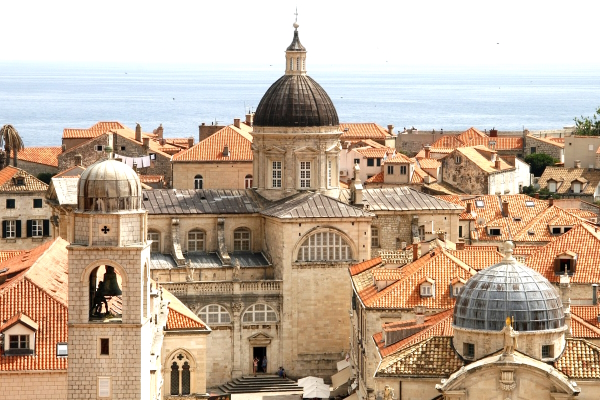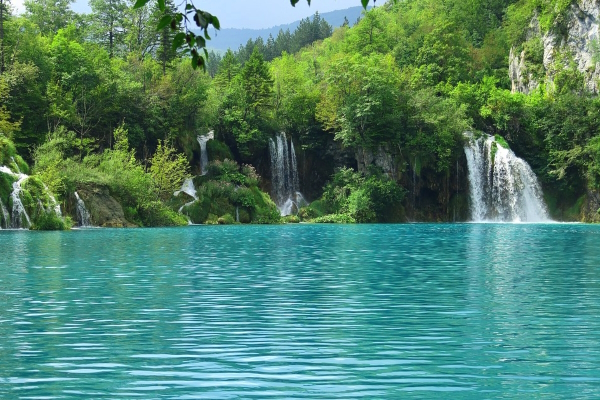Overview of all 10 UNESCO World Heritage Sites (8 World Heritage Sites and 2 World Natural Heritage Sites) in Croatia.
Croatia is a country in south-eastern Europe, bordering Slovenia, Hungary, Serbia, Bosnia and Herzegovina and Montenegro. It has a rich cultural and historical heritage recognised by the United Nations Educational, Scientific and Cultural Organization (UNESCO). In total, there are 10 UNESCO World Heritage Sites in Croatia, reflecting the beauty of nature, architectural heritage and cultural diversity of the country.
See also: National Parks of Croatia – Excursions Croatia – Old Towns of Croatia
1st Historical Complex of Split with Diocletian’s Palace (1979):
This archaeological site in the city of Split houses the ruins of Diocletian’s Palace, an impressive Roman structure dating back to the fourth century AD. The palace was built in the fourth century AD. The palace is one of the finest examples of Roman architecture in the world and a testament to the skill of the ancient engineers. Old Town of Dubrovnik (1979):
2. Dubrovnik, one of Croatia’s most popular tourist destinations, is known for its beautiful coastline and well-preserved medieval architecture. The Old Town of Dubrovnik is a perfectly preserved complex of walled buildings and narrow streets dating back to the 13th century. Century. It is considered one of the most beautiful and historic cities in Europe.

3. Episcopal complex of Euphrasius Cathedral in the historical centre of Porec (1997): The Euphrasius Cathedral of Porec is one of the most important early Christian sites in the world. It was built in the 6th century and features impressive mosaic floors and intricate architecture. The Episcopal complex also includes the Bishop’s Palace and other religious buildings.
4. the historic town of Trogir (1997): Trogir is a small medieval town on a small island off the coast of Croatia. The historic town centre is well preserved and offers many attractions such as the Cathedral of St. Lawrence and the Kamerlengo Fortress

5. Plitvice Lakes National Park (1979): The Plitvice Lakes are a beautiful nature park with 16 interconnected lakes and numerous waterfalls. The park is home to diverse flora and fauna and is one of Croatia’s most popular tourist destinations. Medieval – World Heritage Site
>>> Link: Book tours by bus and hiking Plitvice Lakes

6. Stećci Gravestone Cemetery (2016): This site is a collection of medieval gravestones found in Bosnia and Herzegovina, Croatia, Montenegro and Serbia. The gravestones are unique and feature intricate carvings and decorations.
7. the plains of Stari Grad island of Hvar (2008): Stari Grad is an agricultural landscape that has hardly changed for 2 400 years. There is a system of stone walls and structures here that date back to ancient Greece – World Heritage Site.
8. St James Cathedral in Sibenik (2000): The Cathedral of St James is a fine example of Renaissance architecture with its intricate stone carvings and beautiful frescoes. It was built in the 15th century and is considered one of the most important symbols of Sibenik.
9. Stato da Terra – Western Stato da Mar (2017): The site contains a network of fortifications and defences built by the Venetians between the 16th and 17th centuries to protect the Republic of Venice from Ottoman attacks (some of which were also in Italy and Montenegro).
10. historical city of Zadar (2017): Zadar is a beautiful city on the Adriatic coast. The historic city centre offers many attractions such as the Roman Forum, St. Donatus Church and St. Anastasia Cathedral.
>>> Link Tip: Tours by bus and boat, tickets for sightseeing, city walks etc. in Croatia are best booked on the website Getyourguide.
In summary, Croatia’s UNESCO World Heritage Sites are a testament to the country’s rich history, cultural heritage and natural beauty. They attract millions of tourists every year and are an important part of the Croatian economy. Preserving and protecting these sites is of utmost importance so that future generations can understand and learn from them.
Besides these 10 sights, there are many other cultural and natural attractions in Croatia that are worth visiting. Some of them are the Roman amphitheatre in Pula, St John’s Church in Zagreb, Krka National Park and Brijuni National Park.
Overall, Croatia is a perfect blend of history, culture and natural beauty. The UNESCO World Heritage Site is just one aspect of a must-see destination.
>>> Our tip: Tours by bus and boat, day trips, tickets for sights, city tours, etc. are best booked on the website Getyourguide